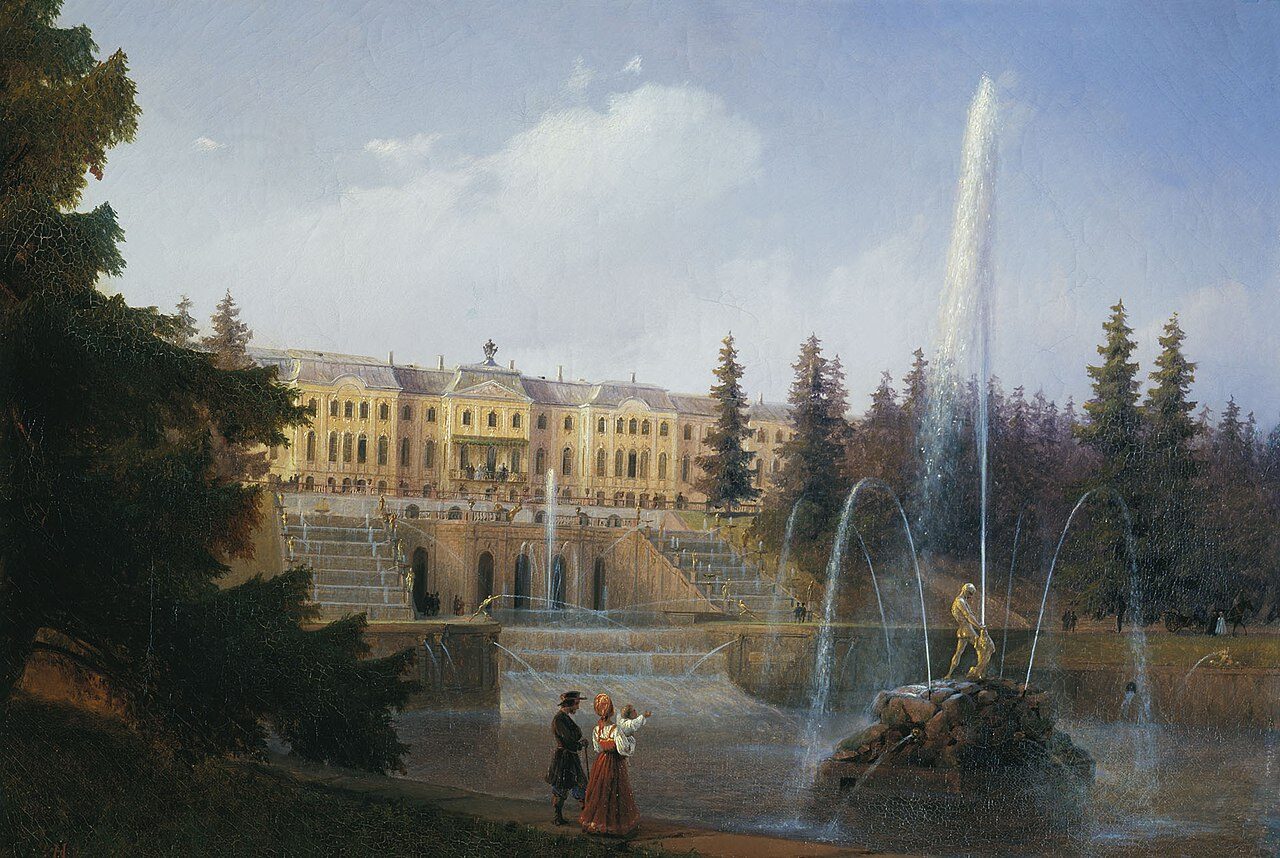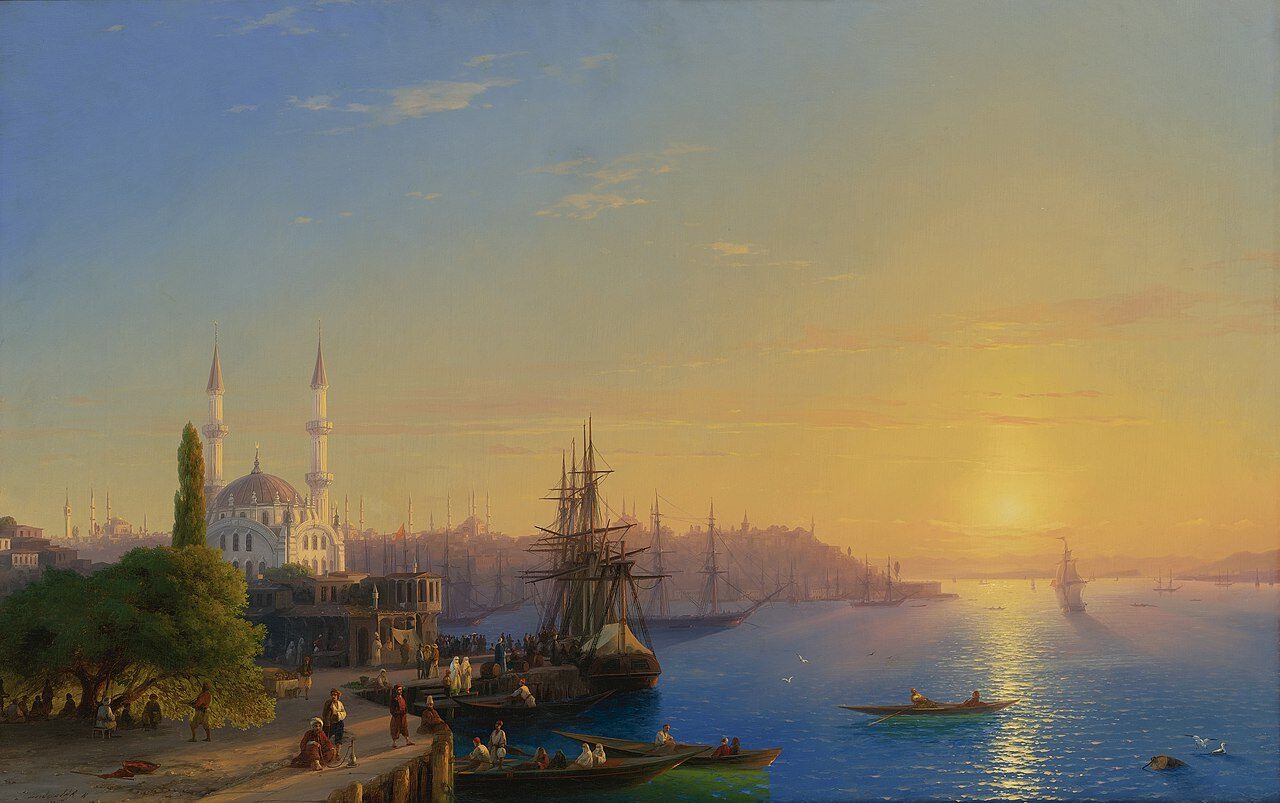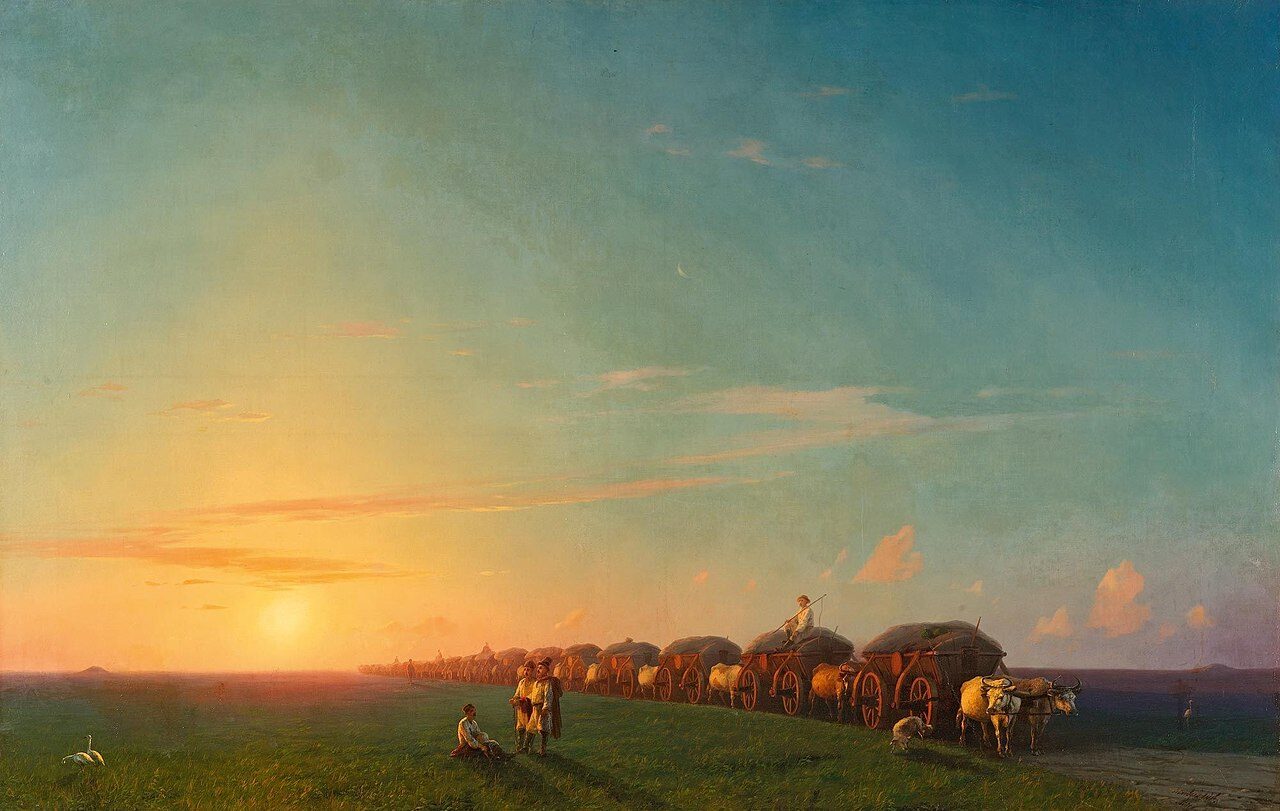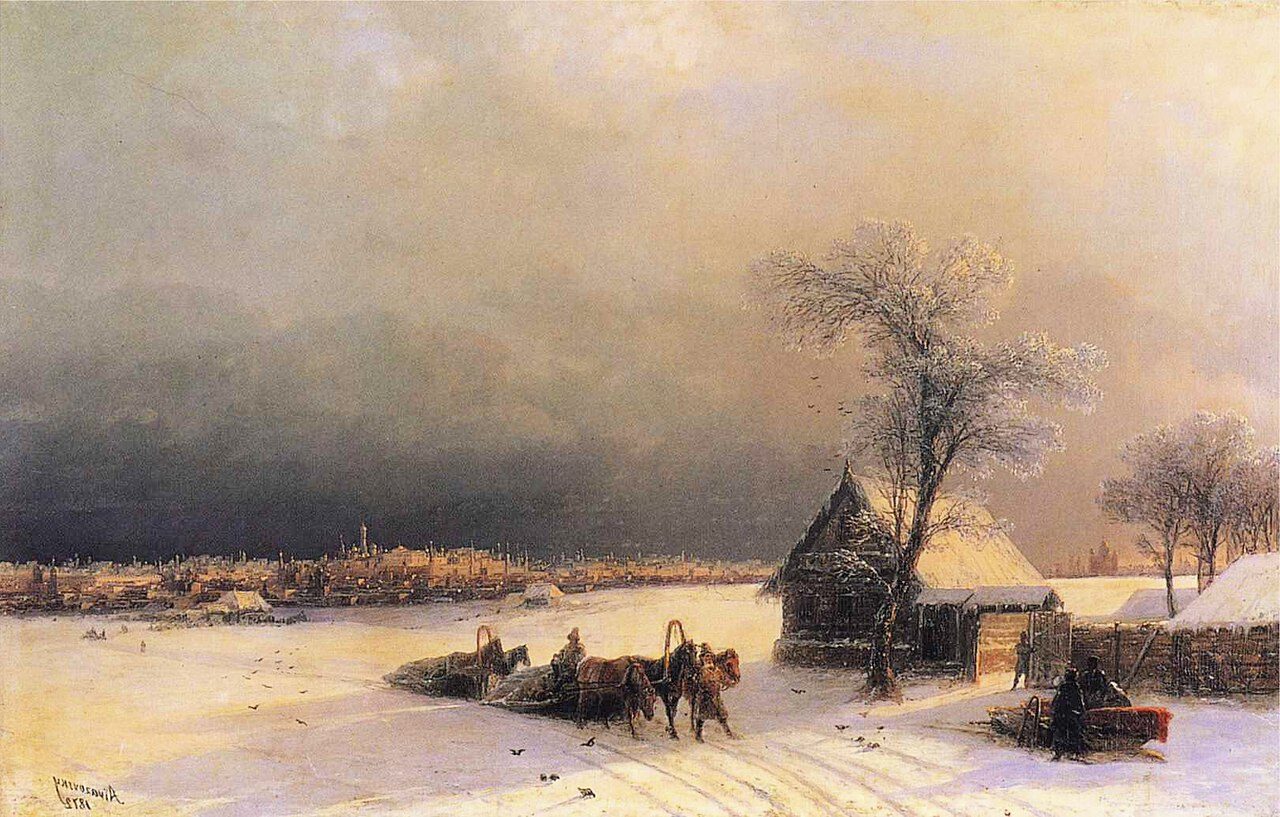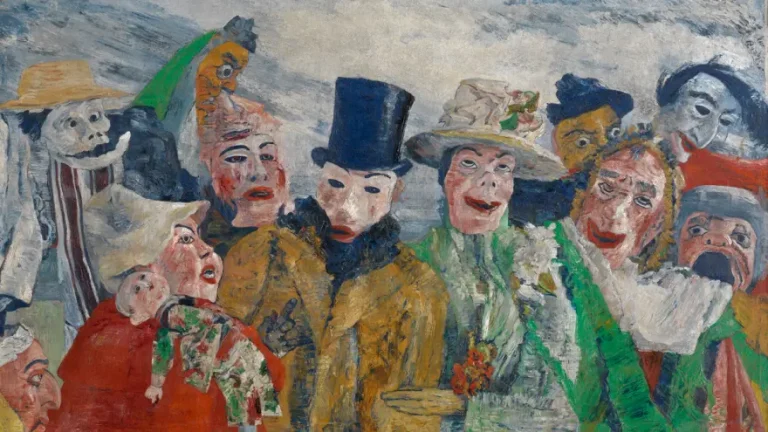Ivan Aivazovsky Paintings: Exploring the Masterpieces of Seascape Art
Born: 29 July 1817, Feodosia, Crimea, Russian Empire
Death: 5 May 1900, Feodosia, Crimea, Russian Empire
Art Movement: Romanticism
Nationality: Russian
Influenced By: Claude Lorrain, Salvator Rosa, and Jacob Isaacksz van Ruisdael
Institution: Imperial Academy of Arts, St. Petersburg
Ivan Aivazovsky Paintings: Exploring the Masterpieces of Seascape Art
Ivan Aivazovsky: The Life of a Master Painter
Ivan Aivazovsky was a celebrated Armenian painter who became a key figure in Russian Romanticism. His marine landscapes left a significant mark on the art world, showcasing his dedication and talent.
Early Life and Education in Feodosia and the Imperial Academy of Arts
Aivazovsky was born in 1817 in Feodosia, Crimea, then part of the Russian Empire. His birthplace, a bustling Black Sea port, influenced his life and work greatly.
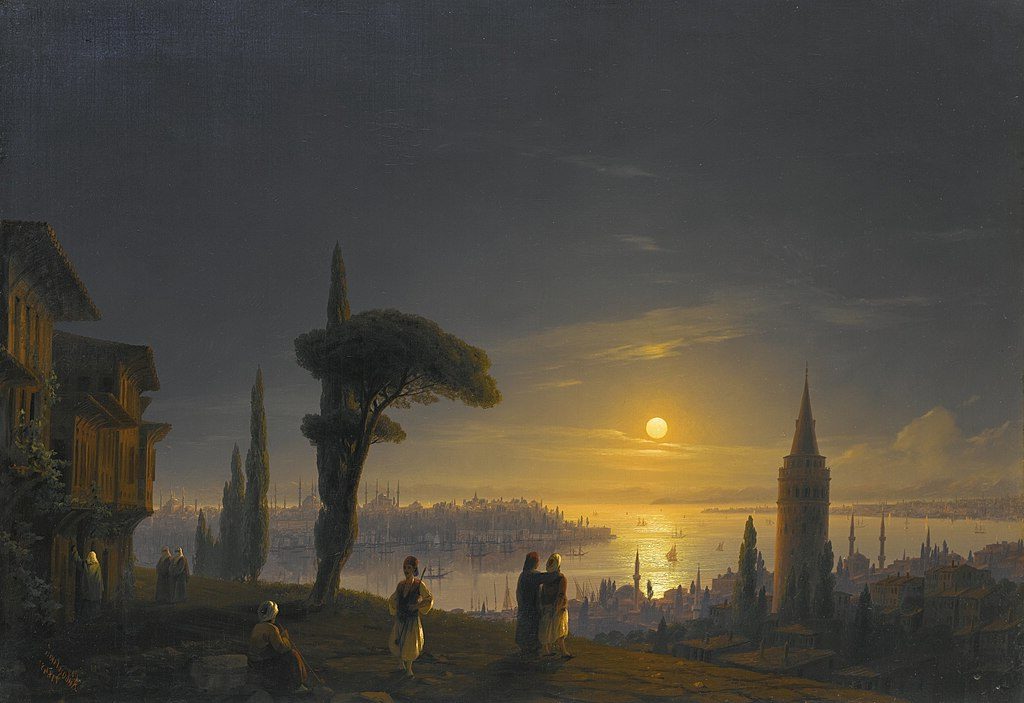
The Galata Tower by Moonlight (1845) by Ivan Aivazovsky
From a young age, he showed a gift for drawing and was encouraged by local officials.
At 14, Ivan moved to St. Petersburg to study at the Imperial Academy of Arts. There, he excelled under the guidance of masters and soon became known for his seascapes. The Academy recognized his talent, awarding him numerous medals, which paved the way for his future accomplishments.
Rise to Prominence and Contributions to Russian Romanticism
After completing his studies, Aivazovsky quickly rose to fame. He traveled across Europe, gaining inspiration from its diverse landscapes.
His marine art, characterized by vibrant colors and dramatic lighting, captured the imagination of many and contributed significantly to Russian Romanticism.
Ivan’s works often featured scenes of the sea in various conditions, reflecting the interplay of nature’s beauty and power. Aivazovsky became a household name, revered not just in Russia, but also internationally. His art exhibitions attracted large audiences, and he established a reputation as one of the greatest marine artists of his time.
Aivazovsky’s Latter Years and Legacy
In his later years, Aivazovsky returned to Feodosia, where he continued to paint prolifically. His studio became a cultural hub, fostering the growth of local art and artists.

Despite his fame, he remained focused on his craft and maintained a rigorous work ethic.
He passed away in 1900, leaving behind a vast collection of paintings. Aivazovsky’s legacy is celebrated worldwide, with his works displayed in major museums and private collections. His influence on marine art and his contributions to Armenian and Russian cultural heritage remain acknowledged and respected to this day.
Artistic Style and Techniques
Ivan Aivazovsky’s art is renowned for its dynamic depiction of water, the interplay of light and air, and the blend of Romanticism with Realism. His artistic style and techniques are vividly expressed in his marine art, with special attention to naval battles and coastal scenes.
Mastery of Light, Air, and Water
Aivazovsky demonstrated an exceptional ability to capture the movement and transparency of water. Seas and oceans, painted in various moods, reflect his keen observation and technical skill.
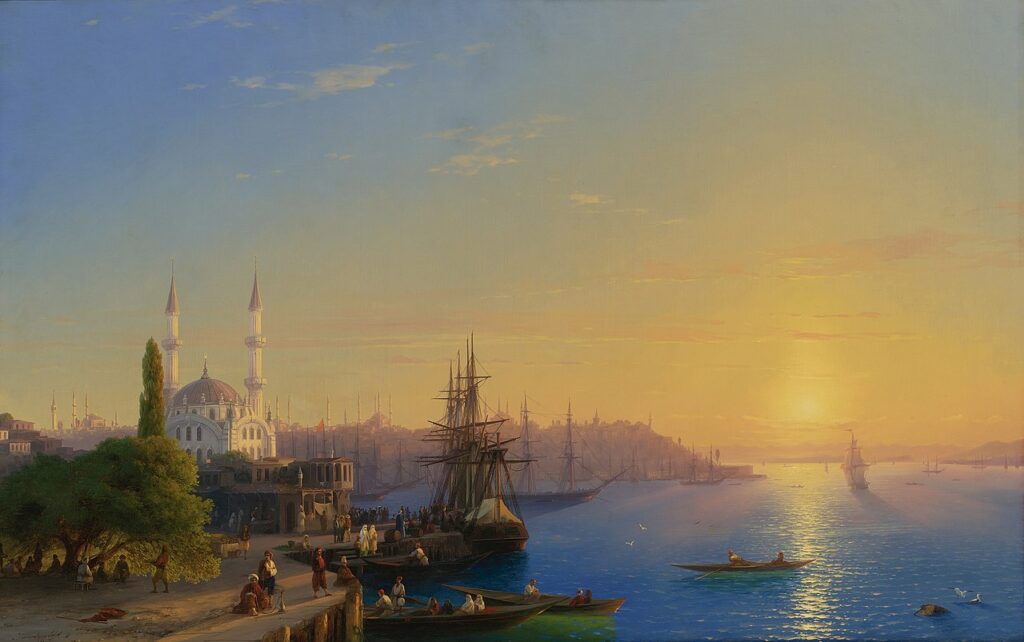
View of Constantinople, with the Nusretiye Mosque (1856)
Light played a crucial role in his work. Changing atmospheric conditions were depicted through shifts in color. His use of light created a striking contrast with dark, turbulent waters, enhancing the dramatic effect.
He often painted skies with intricate gradients, illustrating transitions from calm mornings to stormy evenings.
Integration of Romanticism and Realism
His work embodies elements of both Romanticism and Realism. Aivazovsky’s Romantic roots are visible in the emotive power of the sea and sky, portraying nature’s grandeur and unpredictability.
At the same time, his inclusion of realistic details such as ships, sailors, and landscapes anchored his paintings in reality.
He skillfully integrated precision with emotion. The deliberate choice of subjects like the wrath of the sea or the peacefulness of a tranquil port reflected his ability to combine imagination with faithful representation. His paintings, therefore, appeal to both emotion and intellect.
The Significance of Naval Battles and Coastal Scenes
Naval battles and coastal scenes held significant place in Aivazovsky’s collection. He meticulously depicted historical battles, showcasing his understanding of nautical environments and military ships.
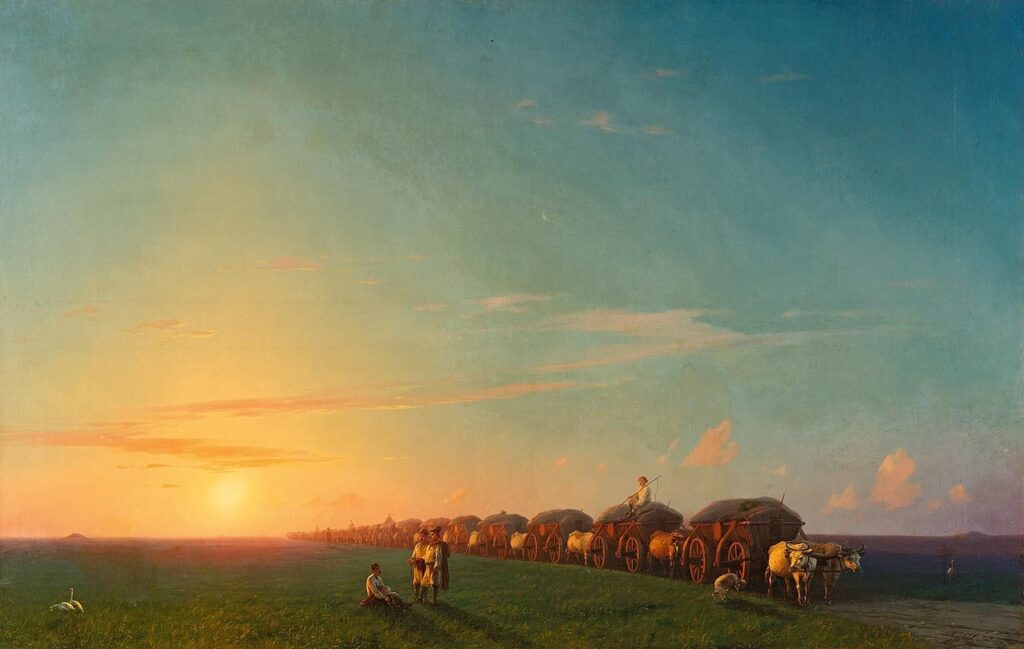
Landscape with Settlers (1856) by Ivan Aivazovsky
His attention to military accuracy reflected a thorough grasp of naval strategy and action.
Coastal scenes illustrated his interest in the interface between land and sea. He often painted bustling port cities, capturing the vibrancy and movement of daily life. These paintings highlighted his ability to convey narratives through art, making viewers feel they’re witnessing a specific moment in time.
Iconic Works and Thematic Excellence
Ivan Aivazovsky, a prominent Russian Romantic painter, is best known for his breathtaking marine landscapes and seascapes. His work captures the immense power of nature, survival, and cultural reflections through dramatic scenes of the sea, storms, and naval history.
The Ninth Wave: A Painting of Survival and Human Endurance
The Ninth Wave is one of Aivazovsky’s most celebrated paintings, projecting a vivid image of hope and courage. It depicts a group of shipwreck survivors pitted against a colossal wave.
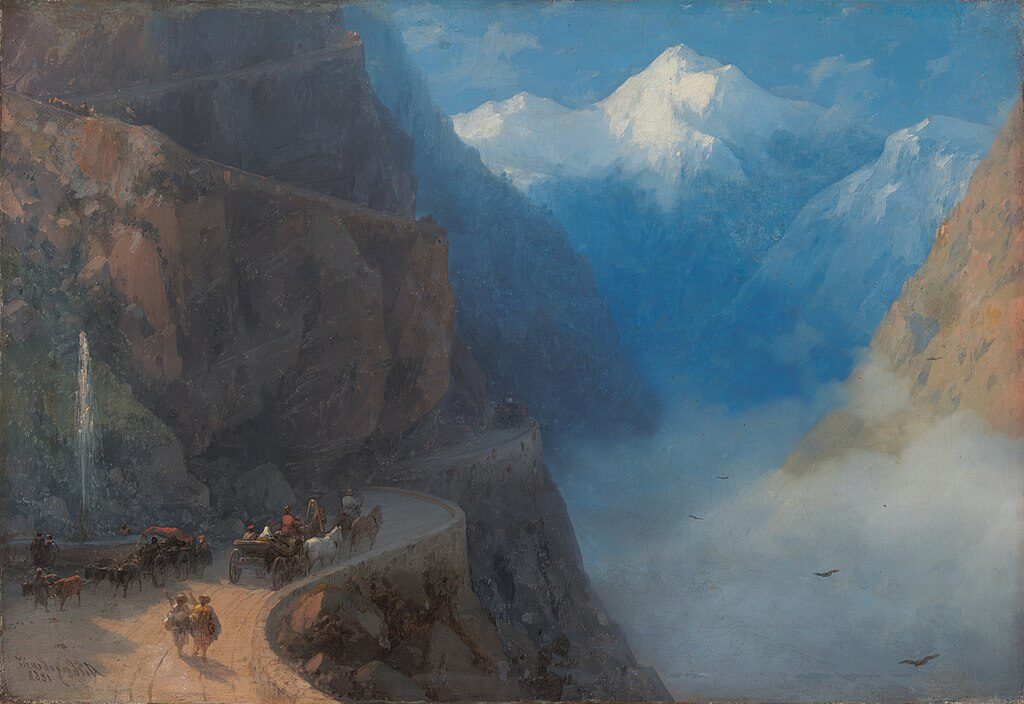
From Mleta to Gudauri (1868) by Ivan Aivazovsky
The sunrise casts a warm glow, symbolizing hope. The sea surrounds them with immense turmoil, showcasing both the sea’s wrath and human tenacity.
The use of light in the painting enhances the dramatic contrast between life and destruction. This masterpiece illustrates Aivazovsky’s understanding of human spirit and nature’s unpredictability.
Portraying the Power of Nature: Stormy Seas and Calm Waters
Aivazovsky skillfully illustrates the duality of the sea through his contrasting portrayals of stormy seas and peaceful waters. Paintings like The Black Sea at Night capture a serene, mystical ocean.
Contrastingly, storm scenes in works such as Shipwreck highlight the violent, destructive side of nature.
His attention to detail, especially in the movement and color of the water, shows his deep appreciation and understanding of the sea’s fickle moods.
Cultural Reflections: From Russian Navy to Armenian Heritage
Aivazovsky’s works often intertwine elements of Armenian themes and Russian naval history. His depictions of the Black Sea Fleet and battles like the Battle of Sinop show his connection to naval subjects and historical events. He infuses a sense of national pride and marine life into his work.

View of Tiflis from Seid-Abaz (1868) by Ivan Aivazovsky
In addition to military themes, Aivazovsky also included Armenian elements, reflecting his heritage. His art forms a bridge between cultures, illustrating deep personal ties to both the Russian Empire and Armenian history, revealing a rich tapestry of influences throughout his paintings.
Collection and Distribution in World-renowned Museums
Ivan Aivazovsky’s paintings are celebrated in numerous prestigious museums worldwide. Several key institutions house his work, ensuring the artist’s legacy endures through a combination of historic and new exhibitions.
Tretyakov Gallery and Russian Museum
The Tretyakov Gallery in Moscow holds one of the largest collections of Ivan Aivazovsky’s works. This museum, a cornerstone for Russian art, features many of his famous seascapes.
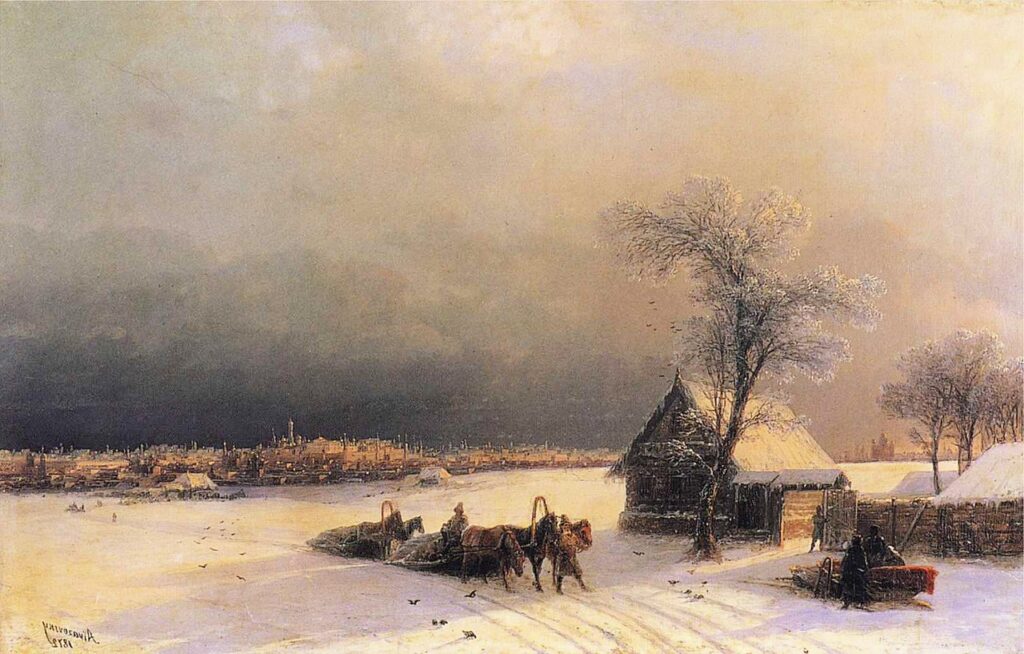
Moscow in Winter from the Sparrow Hills (1872) by Ivan Aivazovsky
Aivazovsky is recognized for his vivid and detailed depiction of maritime scenes, which align well with the gallery’s focus on Russian artists.
The Russian Museum in Saint Petersburg also showcases Aivazovsky’s paintings. This museum is known for its comprehensive collection of Russian art and frequently displays his naval-themed pieces. Together, these institutions play a crucial role in preserving and presenting Aivazovsky’s rich artistic heritage.
Exhibitions Across Europe and Naval Museum Legacy
Aivazovsky’s artworks have captivated audiences in various exhibitions across Europe. These traveling exhibits often include stops in major art hubs such as Istanbul, where he created some of his notable works. His artistry is celebrated far beyond Russia, drawing attention from art lovers worldwide.
Additionally, Aivazovsky’s legacy is reflected in collections at naval museums, thanks to his close association with the sea. These museums showcase his paintings, emphasizing the historical connection between art and maritime exploration. His works continue to inspire, reflecting the timeless allure of the sea.
Influence and Recognition in Art History

Night at Gurzuf (1891) by Ivan Aivazovsky
Ivan Aivazovsky was one of the most prominent figures in maritime painting and Russian Romanticism. His ability to capture the shimmering beauty of the ocean and his achievements earned him accolades from both peers and institutions. Aivazovsky’s legacy continues to inspire artists interested in marine themes and Russian art.
Appraisal by Contemporaries and Honors Received
Ivan Aivazovsky’s work captured the imagination of his contemporaries. His art was praised for its technical skill and emotional depth.
Peers and patrons, including the Russian Imperial family, admired his ability to depict the sea with dynamic realism.
Aivazovsky was elected to the Academy of Arts in Paris and St. Petersburg, which acknowledged his contributions to art. Throughout his lifetime, he received numerous honors from Russian and international institutions.
His exhibitions were celebrated events, often attended by notable figures of the time. His exceptional talent assured him a place among the revered Russian artists of his era.
Aivazovsky’s Enduring Impact on Marine Art and Russian Romanticism
Aivazovsky’s influence on marine art is significant, with his works serving as a benchmark for later painters in the genre. His seascapes are renowned for their illumination and emotional resonance, setting a high standard for depicting nature’s power and beauty.

Battle of Navarino (1848) by Ivan Aivazovsky
In Russian Romanticism, he stands out for how he merged traditional techniques with a unique personal style. His exploration of light and movement inspired future generations of Russian painters.
Artists and historians continue to study his approach to water and atmosphere, ensuring his work remains a vital part of discussions in art history today.
Frequently Asked Questions
Ivan Aivazovsky was famous for his marine art, capturing the vastness and beauty of the sea. His works are highly sought after, cherished for their unique artistic techniques, and possess historical and cultural relevance.
What are some of the most famous works by Ivan Aivazovsky?
Some of Aivazovsky’s most notable works include The Ninth Wave, The Black Sea, and Storm. These paintings are celebrated for their breathtaking depictions of the sea, showcasing Aivazovsky’s mastery in portraying the power and beauty of nature.
What artistic techniques did Ivan Aivazovsky use in his paintings?
Aivazovsky utilized techniques such as delicate brushwork to capture the fluidity and movement of water.
He often employed a dramatic use of light and color to create vibrant seascapes that seemed to glow, enhancing the realistic depiction of atmosphere and emotion.
Where can one view Ivan Aivazovsky’s original paintings?
Aivazovsky’s original paintings can be viewed in various museums, including the State Russian Museum in Saint Petersburg and the Aivazovsky National Art Gallery in Feodosia, Crimea. Many of his works are also held in private collections around the world.
What is the historical significance of Aivazovsky’s painting ‘The Ninth Wave’?
‘The Ninth Wave’ is considered a masterpiece of marine art. Created in 1850, it depicts survivors clinging to a ship’s wreckage during a storm. The painting symbolizes hope and perseverance against nature’s fury and is often regarded as Aivazovsky’s most famous work.
How has Ivan Aivazovsky’s heritage been perceived in different cultural contexts?
Aivazovsky was of Armenian-Russian descent, and his heritage is celebrated in both Armenian and Russian cultures. He is often regarded as a national pride in Russia, while Armenians commemorate him for his contributions to art representing Armenian culture.
What are the typical price ranges for Ivan Aivazovsky’s paintings at auction?
Aivazovsky’s paintings can fetch high prices at auctions. For instance, “View on Constantinople and the Bosphorus Bay” sold for $5.2 million. Generally, his paintings are highly valued. Prices vary greatly based on factors like authenticity, condition, and historical significance.

